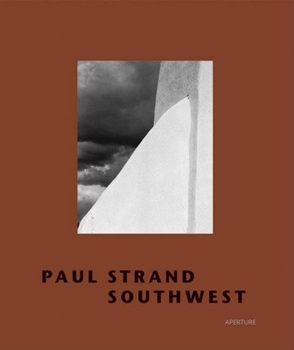Paul Strand: Southwest
For Paul Strand, the great pioneer of Modernism, the summers of 1926 and 1930-1932 were a return to experimentation and periods of great artistic growth. He worked in makeshift darkrooms--one in a hotel basement and another above the Taos movie theater. The Southwest period brought not only artistic renewal, but also personal turmoil. His political and social ideas were shifting, and his relationship with the two most important people in his life--his...
Format:Hardcover
Language:English
ISBN:1931788464
ISBN13:9781931788465
Release Date:June 2005
Publisher:Aperture
Length:112 Pages
Weight:1.80 lbs.
Dimensions:0.6" x 9.9" x 11.7"
Customer Reviews
0 rating





